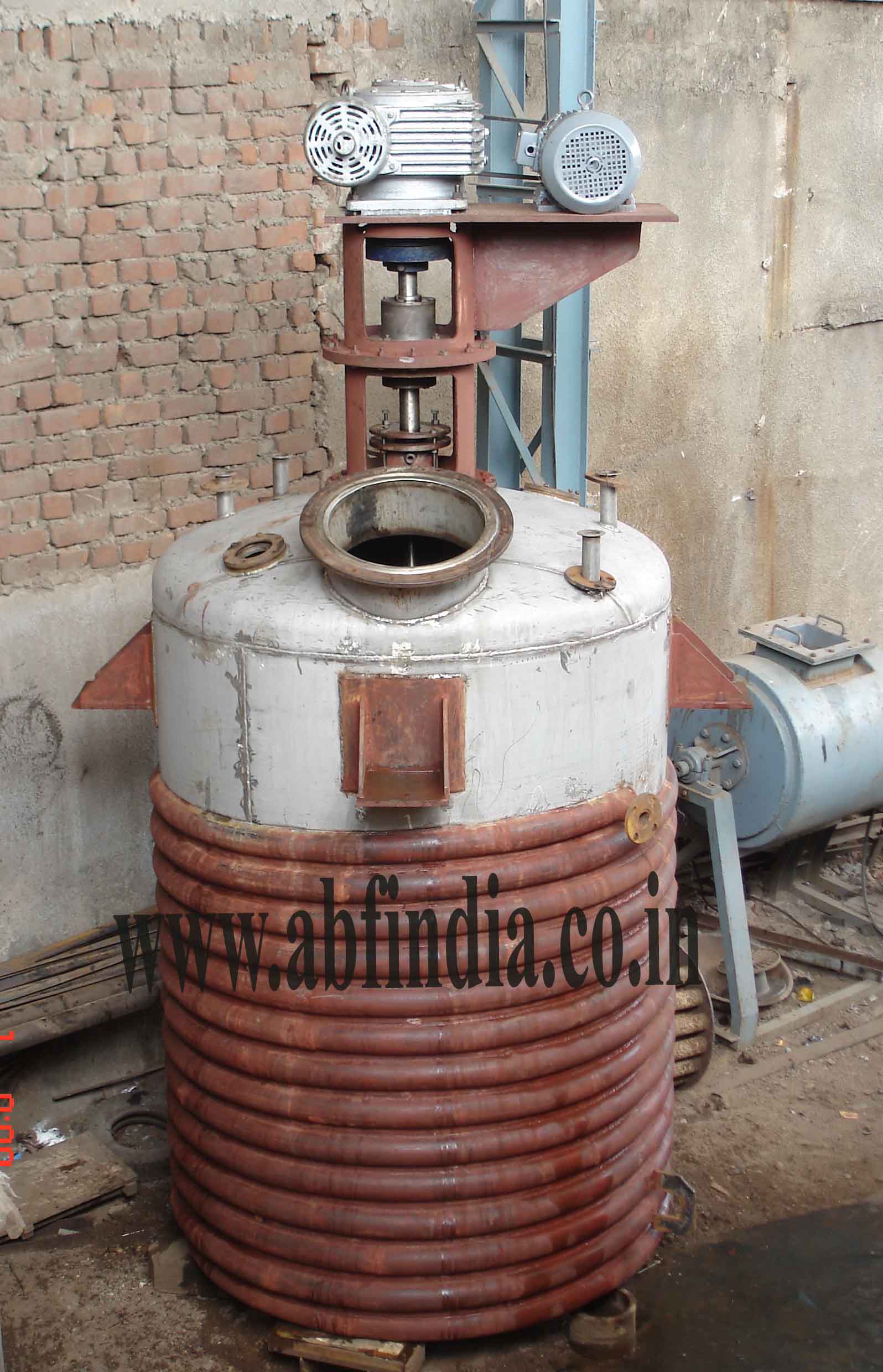
Application
1). Resin: alkyd resin,epoxy resin,phenolic resin,acrylic resin,unsaturated polyster resin,polymer resin…..
2). Glue/ Adhesive:
Hot melt glue/adhesive,white glue,silicon glue,PVC glue,PVA,PU glue….
3). Others: Paint,pigment,other latex,emulsion and liquid glue and adhesive.
Advantage and specification of Unsaturated Polyester Resin Plant :
1.Material: a) kettle and cover: SUS 304 or SUS 316; b) jacket: SS304 or carton steel
2.Heating way: Electric heating, oil heating, steam heating or firing heating. optional.
3. Structure type: Outer coil heating reactor, Inner coil heating reactor, Jacket heating reactor.
Structure and Features:
Reactor consists of the reactor body, tank cover, jacket, agitator, transmission, shaft seal device and supporting.
UNSATURATED POLYESTER RESINS PRODUCTION PROCESS DESCRIPTION
Unsaturated polyester is formed by chemical reaction between glycol with di-basic unsaturated acid. This reaction, together with the addition of compounds such as saturated di-basic acids and cross-linking monomers, forms the basic process of unsaturated polyester manufacture. As a result there is a whole range of polyesters made from different acids, glycols and monomers – with combination of different ratios between them, all having varying properties.
Process of cross-linking
The molecular chains of uncured polyester can be represented as follows, where »B« indicates the reactive sites in the molecule.
With addition of styrene »S« and in the presence of a catalyst, the styrene cross-links the polymer chains at each of the reactive sites to form highly complex three-dimensional network cured polyester as presented.
Cured polyester is now chemically resistant (and usually) hard solid. The cross-linking or curing process is called »polymerization«. It is a non-reversible chemical reaction.
Filling and mono-ester formation
On basis of predetermined type of formulations raw materials are fed into the esterification reactor. Liquid raw materials (glycols, Phthalic and Maleic anhydride) are fed from the storage tanks. Solid raw materials (fumaric acid, iso-phthalic acid and terephthalic acid) are dozed in solid form through solid feed system directly into the reactor.
After the glycols are charged, the stirring and heating is switched on. Then the acids and anhydrides are fed to the reactor. Depending on the recipe more stages could be necessary. Following, the mass is heated up to the initial temperature of the exothermic reaction and maintained until the complete formation of mono-ester.
Esterification
The temperature and vacuum inside of the reactor are maintained until the UP resin reaches characteristics prescribed by the recipe. During the esterification the water is removed from the reactor through the column which separates the glycols from water. Glycols return to the reactor, while the water is removed from it. The reaction and distillation is carried out until the increase in weight of reaction water is practically zero. This also means that reaction in the reactor has reached equilibrium and esterification is complete. At the end of the reaction vacuum is applied to the reactor. The polyester resin formation is controlled by measurement of acid value and viscosity. Reaching the end of reaction the reactor is cooled down.
Dilution phase
The resin is transferred to dilutor which is equipped with high efficiency cooling and with a condenser for styrene vapours, which are after condensation returned in dilutor. The cooling of the product in the dilutor continues also after the complete transfer of resin from reactor until the product reaches the required temperature. In the dilutor the resin is further adjusted to viscosity, reactivity and shelf life desired by the client with addition of inhibitors or promotors. The final product is then transferred to the resin storage tanks.
alkyd resins
short oil
middle oil
long oil
polyester resins
unsaturated
saturated
phenolic resin
resole
novolak
urea resins
melamine resins
Polymerization Plants for
acrylic resis
acrylic emulsion
polymere emulsions
Polyaddition Plants for
polyurethane resins
polyurethandispersions
Equipment for the Production of Binders for Printing Inks
